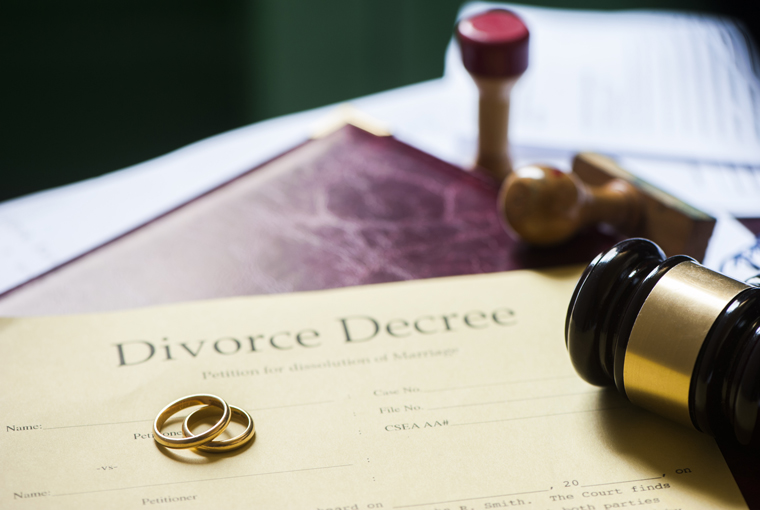What does a decree NISI look like?

Marriage represents a legally binding union between two individuals, encompassing both personal commitment and legal obligations. When couples decide to end their marriage, they must navigate a formal legal process that involves several crucial documents and court orders. One of the most significant documents in divorce proceedings is the Decree Nisi, which marks a pivotal step toward the dissolution of marriage. Given the complexity of divorce proceedings and their significant legal implications, it is strongly recommended to seek professional legal counsel to understand your rights and obligations.

Key Takeaway: How long does a typical Decree Nisi application take to be processed by the court?
Thinking of filing for divorce? Understand the entire process, including the Decree Nisi, to ensure a smooth journey. Read on to avoid pitfalls!
Divorce Decree: The main steps
Marriage, being a legal arrangement, must meet legal requirements as set by law. Similarly, dissolving a marriage also requires following a legally prescribed process where either partner can initiate separation or divorce.
The following are the steps that married partners must follow to obtain a divorce Decree Nisi in England and Wales:
Filing for divorce
To file for divorce, either partner needs to file the appropriate divorce petition. The petition must include the court fee of GBP 550 and the marriage certificate that includes the date of marriage, names of both spouses, etc.
Serving the divorce papers
After receiving the divorce petition, the Court issues a copy of the divorce papers to the respondent. This process is called the service of divorce papers. Generally, the Court requires the respondent to acknowledge receipt to begin the proceedings. If the respondent is missing, a separate application must be filed for the dissolution of the marriage.
Applying for a Decree Nisi
After serving the divorce papers, the next step is for the respondent to initiate proceedings for the Decree Nisi. The spouse may submit a request for a Decree Nisi if both partners agree with the divorce petition. The applicant must complete the application for Decree Nisi along with a written statement confirming that the facts stated in the petition are true.
There are five grounds or categories for filing a Decree Nisi form, and the applicant must use one of these for the issuance:
- Adultery statement.
- Unreasonable behaviour statement.
- Desertion statement.
- 2 years’ separation statement.
- 5 years’ separation statement.
The defendant must provide details and justifications based on the selected ground to support their claim for divorce. Additionally, the response to the divorce papers must be included in the Decree Nisi application, along with the relevant statements. Failing to complete the application properly may result in no proceedings being initiated for the issuance of the Decree Nisi.
What is a Decree Nisi?
The Decree Nisi meaning refers to it being the first major step in the divorce proceedings. Once the Court receives a complete Decree Nisi form, it issues a certificate of entitlement. This signifies that the Court has accepted the application and that the judge considers the marriage to be broken based on the grounds provided by the defendant, including adultery, unreasonable behaviour, desertion, or separation (either 2 years with consent or 5 years without consent).
The certificate of entitlement includes the date on which the Court will pronounce the Decree Nisi. After this date, the Court provides a final timeframe, during which either party can present justifiable reasons why the marriage should not be dissolved. This period is known as the statutory 43-day requirement between the awarding of a Decree Nisi and the Decree Absolute, which finalizes the divorce.
How to apply for a Decree Nisi online?
To apply for a Decree Nisi online, follow these steps:
- Ensure eligibility: You must have been married for at least one year and prove the marriage has irretrievably broken down.
- Prepare documents: Gather your marriage certificate (original or certified copy) and any proof of name change.
- File application: Submit the divorce application online via GOV.UK, pay the Decree Nisi cost (£593), and provide marriage details.
- Serve divorce papers: The Court will send a copy to your spouse, who must acknowledge receipt.
- Apply for Decree Nisi: Log in to your online account and complete the Decree Nisi application, confirming the details are true.
- Court review: A judge will review your application and, if satisfied, set a date for Decree Nisi pronouncement.
- Decree nisi pronouncement: The Court pronounces the Decree Nisi on the given date. No attendance is required.
- Apply for Decree Absolute: After six weeks, apply for the Decree Absolute to finalize the divorce.
What happens after Decree Nisi?
Once the Decree Nisi certificate has been issued, there is a waiting period of six weeks before one can apply for a Decree Absolute. During this time, if neither party contests, the marriage will be dissolved by the Court. This time frame is meant to provide a fair opportunity for both parties to reconsider and submit necessary proof if they believe the marriage should not be dissolved. Therefore, the decree nisi is NOT the final proof of divorce but rather a conditional order, giving parties time before final dissolution.
How does Decree Nisi look like?
The Decree Nisi copy includes the following essential details:
- Full name of the petitioner as mentioned in the marriage certificate.
- Full name of the respondent as mentioned in the marriage certificate.
- Name of the co-respondent (if applicable).
- Date of pronouncement of the Decree Nisi.
- Reason or grounds for divorce, as stated in the petition.
- Date of the marriage contract.
- Place of marriage, including the city and country.
- Statement confirming the conditional nature of the decree.
It is clearly mentioned that “THIS IS NOT THE FINAL DECREE” and that an application for the Decree Absolute must be made after a period of no less than six weeks from the given date.
The Decree Nisi provides a timeframe for either party to submit necessary evidence to prevent the Court from issuing the final divorce order. Additionally, the respondent may also challenge or dispute the cost calculations related to the dissolution of the marriage.
Do I need a lawyer?
While it is not mandatory to have a lawyer to apply for a Decree Nisi, having legal representation can be beneficial. Here are some reasons why you might consider hiring a lawyer:
- Ensure accuracy: A lawyer can help ensure that all documents are correctly filled out and submitted on time.
- Provide legal advice: They can provide advice on your legal rights and obligations during the divorce process.
- Handle complex matters: Legal representation is particularly useful in cases involving disputes over assets, children, or other complex issues.
- Avoid mistakes: Mistakes in the application process can lead to delays or complications, which a lawyer can help prevent.
- Support during negotiations: If there are negotiations over finances or childcare, a lawyer can help represent your best interests.
If you are unsure about any aspect of the divorce process, consulting with a lawyer is highly recommended.
FAQs
- What is the difference between Decree Nisi and Decree Absolute? The Decree Nisi is a provisional order that shows the court sees no reason why the divorce cannot proceed. The Decree Absolute is the final order that legally ends the marriage.
- Is a conditional order the same as a Decree Nisi? Yes, a conditional order is another term used for a Decree Nisi in divorce proceedings.
- Does a Decree Nisi expire? No, a Decree Nisi does not expire, but there may be additional steps needed if a significant amount of time passes before applying for the Decree Absolute.
- Is a Decree Nisi proof of divorce? No, a Decree Nisi is not proof of divorce. The divorce is only finalized once the Decree Absolute is issued.
Obtaining a Decree Nisi is a crucial step in the divorce process. While you can apply online, seeking professional legal guidance is highly recommended to avoid costly mistakes and ensure a smooth progression towards your Decree Absolute and final divorce settlement.
Need help with your Decree Nisi application?
Qredible can connect you with experienced divorce solicitors who specialise in handling divorce proceedings.
KEY TAKEAWAYS:
- The Decree Nisi is a provisional divorce order requiring a £550 court fee and proper documentation.
- Five grounds exist for filing: adultery, unreasonable behaviour, desertion, 2-year separation, or 5-year separation.
- There’s a mandatory 43-day waiting period between Decree Nisi and Decree Absolute.
- The Decree Nisi contains specific details including full names, marriage date, and grounds for divorce.
- While online applications are possible, legal guidance is recommended to avoid complications and delays.
Do you need a solicitor?
Find a solicitor on Qredible in just a few easy steps
















